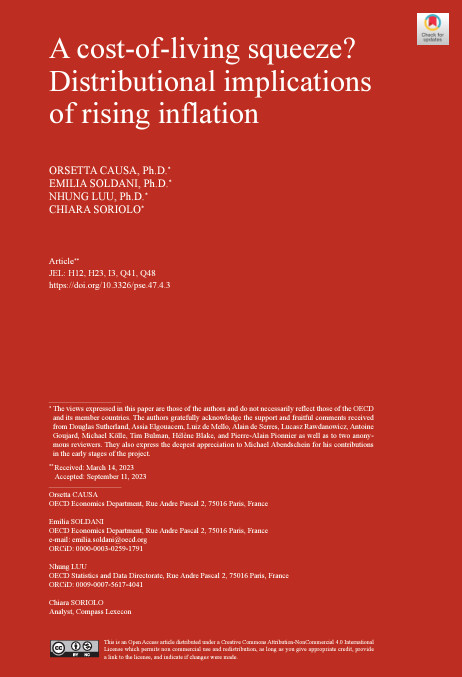A cost-of-living squeeze? Distributional implications of rising inflation
DOI:
https://doi.org/10.3326/pse.47.4.3Keywords:
inflation, purchasing power, distribution, inequality, energy, policy analysisAbstract
In most OECD countries inflation sharply increased since the end of 2021, mostly driven by energy and food prices. Certain categories of households are particularly vulnerable, as they spend large portions of their consumption on energy and food. Drawing on national micro-based household budget survey data, this paper quantifies the impact of rising prices on households’ welfare. Declines in household purchasing power between August 2021 and August 2022 are estimated to range from 3% in Japan to 18% in Czechia. This decline is driven by energy prices in most countries, especially Denmark, Italy, and the United Kingdom. In general, inflation weighs relatively more on lower income households. The effects are stronger for rural households, due to energy price inflation. These findings call for a careful targeting of income and price support measures, notwithstanding their administrative and logistical complexity, taking into account their effects on economic activity, inflation, and environmental goals.

Downloads
Published
How to Cite
Issue
Section
License
Copyright (c) 2023 Orsetta Causa, Emilia Soldani, Nhung LUU, Chiara Soriolo

This work is licensed under a Creative Commons Attribution-NonCommercial 4.0 International License.








